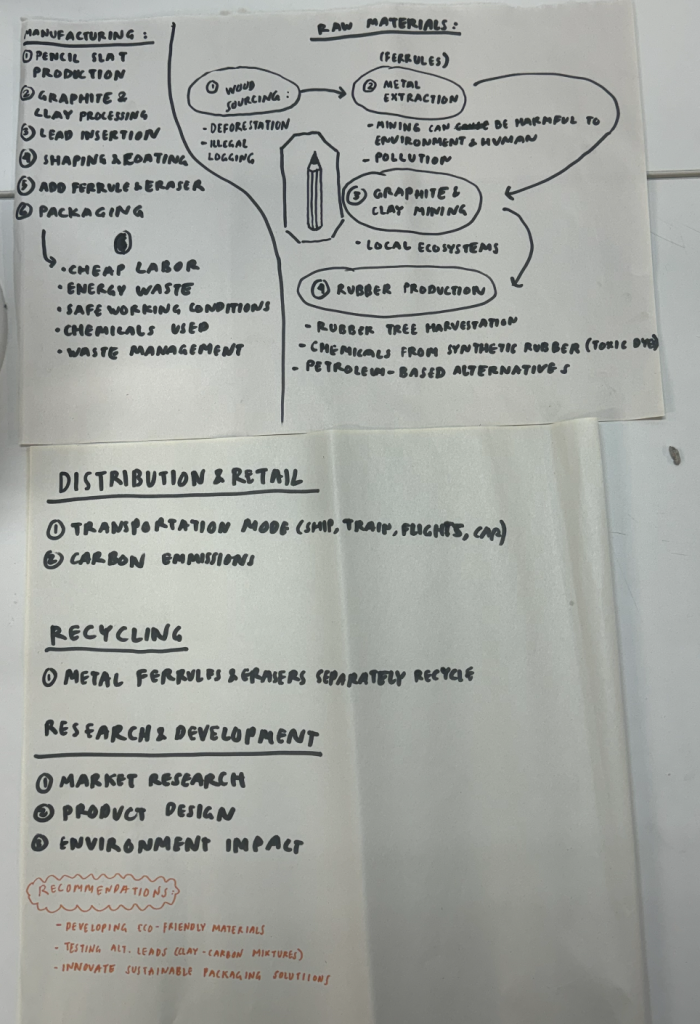
This week, we explored the production journey of a pencil as a way to critically examine the environmental and social impact embedded in everyday objects. Much like a Life Cycle Analysis (Ayres, 1995), the exercise involved tracing each stage of the pencil’s existence, from raw material extraction (wood, graphite, aluminum) to manufacturing, packaging, distribution, use, and eventual disposal. By visually mapping the journey, we were able to identify areas of waste, inefficiency, and missed opportunities for sustainable intervention.
The task encouraged us to rethink the pencil not as a neutral object, but as part of a broader system of consumption. For example, we considered how sourcing FSC-certified wood could reduce ecological harm, how refillable or modular pencil designs might extend usability, and how messaging on packaging could encourage mindful disposal or reuse. Through this process, I became more aware of how even the most familiar, overlooked objects hold potential for redesign, both materially and socially.
Ultimately, the activity helped me reflect on design’s role in shaping systems, not just products. It reminded me that every touchpoint, from sourcing to user experience, offers a chance to reimagine impact.
Leave a Reply